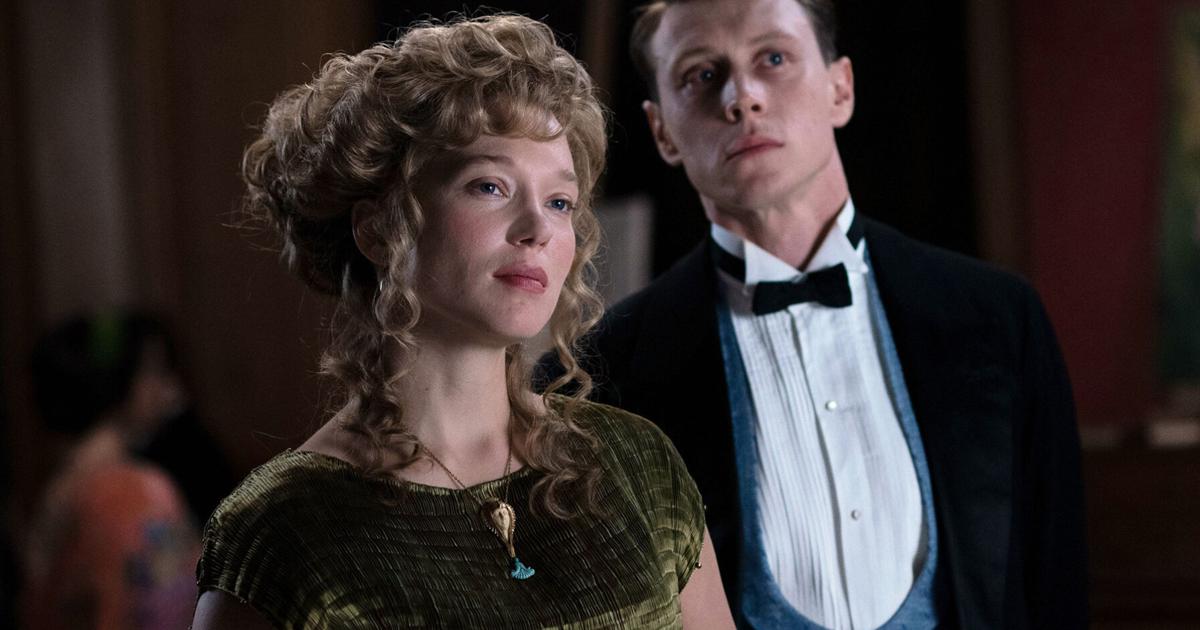
Grade: 3.0/5.0
Isn’t the rhetorical question trick a bit juvenile? It’s a way for the reviewer to put distance between them and their opinion, while at the same time positioning that opinion as self-evident. It’s also a painless way to get a jab in, implying the reviewer wouldn’t deign to dignify their subject with a definite statement. “Who is this movie for?” plants in the reader’s mind one idea: this movie sucks.
And yet, after watching “The Beast,” one can’t help but wonder… “Who is this movie for?” French director Bertrand Bonello’s newest film is bold enough to spur a thousand questions — “Am I enjoying this?” “Am I dumb?” or simply “Why?” — but too opaque to offer undemanding answers.
It’s simple work tracing the plot of “The Beast,” though you can never be too sure you’re understanding it correctly. An opulent turn-of-the-century Paris sets the film’s first half, while its remaining runtime is dedicated to modern-day Los Angeles. Each section feels like a different film, yet both feature the same characters: Gabrielle (Léa Seydoux) and Louis (George MacKay). A third story set in 2044 serves as a framing device, explaining that the film’s dual parts are different past-life memories.
While it might not sound so simple on paper, the film’s slow pace gives more than enough time to get comfortable with the material. Its 146-minute runtime also provides Bonello a large canvas on which to show off his style. Contained within the film is some mouth-watering cinematography, best when it luxuriates in decadent set dressing. Specific images also capture the mind just as strongly as the eyes — several shots of a flooded Paris are personal favorites.
Confusion only comes at the imposition of symbolic omens, jarring editing choices, and eclectic references (to incel terrorist Elliot Rodger and the Harmony Korine film “Trash Humpers”). These may momentarily distract the viewer with different possible interpretations of what’s literally transpiring, but the “real” narrative is always the one that seems the simplest.
As a result, watching “The Beast” sometimes feels like a chore with little payoff. While the film is stylistically an oblique, capital-a Art movie, its plot is never loose or subliminal enough to let the viewer’s conscious mind off the hook. It’s tough to get on the film’s wavelength when one’s guard is always up.
When viewing the film this way, it can simultaneously fly over your head and patronize you. Certain repetitions are clearly noticeable, but their meanings are far from obvious, allowing for endless interpretation. For instance, dolls show up in all three of the film’s settings, growing more technologically complex with each jump in time. Perhaps the dolls symbolize the importance of vulnerability, illustrating how hollow life can be when we rid ourselves of fear and love. This interpretation is complicated by a scene where a factory of dolls burns down; if we interpret the dolls as symbolizing fragility, then that too-basic “safe loneliness vs. risky romance” dichotomy falls apart.
All this exegesis is great fun once initiated, but it’s hardly encouraged when the film kills its momentum to force certain explanations on the viewer. In one scene, when a psychic mentions that pigeons represent danger, the audience is sure to recall an earlier scene where a pigeon accosting Gabrielle was the only event of note. And yet we are treated to a flashback of that very moment — as if explicating meaning is somehow more important for this pigeon than for a litany of other symbols.
Particularly irritating is another flashback during the finale of the LA portion, this time to the very beginning of the film. The gap between setup and payoff is further here, but the flashback doesn’t provide any necessary information. Instead, a bit of artistic parallel is made glaringly apparent, robbing the viewer of the chance to discover it on their own. What an “Aha!” moment that could have been.
In short, “The Beast” is a film that’s better to have watched than to watch. In the back of one’s mind, its tedious qualities are erased, and its best moments are condensed into a slideshow of pretty pictures and complicated feelings. In our waking reality, things aren’t so simple.
